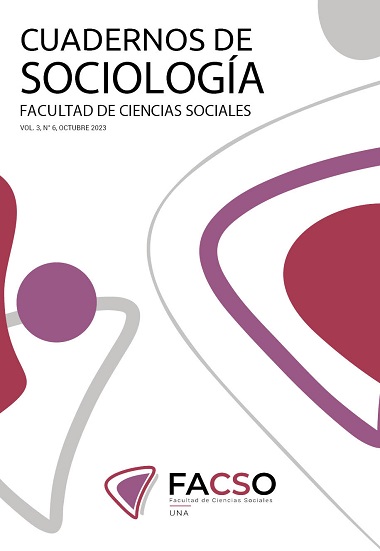The coexistence community as an alternative psychosocial model
DOI:
https://doi.org/10.54549/cs.2023.3.6.4439Keywords:
Social psychology, bond, community of coexistenceAbstract
When pedagogical coexistence is expressed (Arestivo, 2020), the importance of learning to relate to others and build new learning processes is emphasized. Pichón-Rivière (1985) mentioned a keyword in this plan, link, which in social psychology is where the object of analysis is the individual and their relationship with others and not the person themselves. Under this principle, the methodology of coexistence is supported, among children and adolescents (NNA) who have been in street situations. This article describes the work process carried out with this population within the Pedagogical Coexistence Center - Ñemity. Within a community, alternative and innovative model for the classic forms of care for this type of population. The body of the work consists of a first part, where the reader will find conceptual definitions of social psychology and the coexistence community. Second, you can observe the practical application of the methodology. And, finally, the results of the experience in the Pedagogical Coexistence Center - Ñemity.
Downloads
References
Adamson, G. (2005). Psicología social para principiantes. Psicología social para principiantes, 1-194.
Ander Egg, E. (1982). Metodología y práctica del desarrollo de la comunidad. Arestivo, C. (2020). Décimo aniversario del Centro de Convivencia Pedagógica Ñemity.
Freire, P. (2005). Pedagogía del oprimido (2° ed.). Siglo XXI Editores S. A. de C. V. https://fhcv.files.wordpress.com/2014/01/freire-pedagogia-del-oprimido.pdf
Freud, S. (1921). Psicología de las masas y análisis del Yo. Biblioteca Virtual OMEGALFA. http://es.pdfdrive.com/psicolog%C3%ADa-de-las-masas-y- an%C3%A1lisis-del-yopdf-e34158837.html
Ley No 1183 de 1985. Código Civil del Paraguay (CCP). https://www.bacn.gov.py/leyes- paraguayas/5293/codigo-civil
Ley No 1680 de 2001, Código de la Niñez y la Adolescencia (CNNA). https://www.bacn.gov.py/leyes-paraguayas/5261/codigo-de-la-ninez-y-la- adolescencia
Moffatt, A. (2007). Terapia De Crisis, La Emergencia Psicológica (1° ed.). Libro de edición Argentina. https://www.academia.edu/download/39441832/Terapia-de- crisis.pdf
MSP y BS. (2018). Drogas nocivas: Efectos devastadores que desencadena una adicción—Ministerio de Salud Pública y Bienestar Social. Ministerio de Salud Pública y Bienestar Social del Paraguay. https://www.mspbs.gov.py/portal/16712/drogas-nocivas-efectos-devastadores- que-desencadena-una-adiccion.html
Papalia, D. E. (2019). Psicología del Desarrollo (12° ed.). MCGRAW-HILL. https://www.casadellibro.com/libro-psicologia-del-desarrollo-12- edicion/9781456270018/9790955
Pichón-Rivière, E. (1975). El proceso grupal: Del psicoanálisis a la psicología social. (Vol. 1). Ediciones Nueva Visión SAIC. https://cpb-us- w2.wpmucdn.com/blogs.udla.edu.ec/dist/b/364/files/2016/02/El-Proceso- Grupal-Pichon-Riviere-Libro-zo015b.pdf
Pichón-Rivière, E. (1977). La psiquiatría, una nueva problemática Del psicoanálisis a la psicología social (II): Vol. II (1°). Editorial Nueva Visión S.A.I.C. http://bloguamx.byethost10.com/wp-content/uploads/2015/04/pichon-riviere- enrique-del-psicoanalisis-a-la-psicologia-social-021.pdf?i=1
Pichón-Rivière, E. (1985). Teoría del vínculo (5°). Ediciones Nueva Visión SAIC. https://proletarios.org/books/Riviere-Teoria_del_vinculo.pdf
Winnicott, D. W. (2003). Realidad y Juego (10°). Gedisa S. A. https://gedisa.com/






